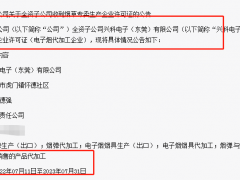来没有任何一个电子类消费品,像电子烟一样,在短时间内经受过如此密集的“负能量”的言论轰炸,在刚刚过去的九月份,全球电子烟行业面临了前所未有的挑战。
因为出现了较多与电子烟有关的肺病案例,从而引发了一系列的对电子烟的负面消息报道,源头则是美国发生的多起致命和疑似致命案例。美国社会对于电子烟的舆论呈现出一边倒的监管以及限制,接连出现的事件使得国内的电子烟用户对电子烟产生巨大的怀疑,然美国作为资本主义私有制国家,这些事件背后也有着多方利益的博弈。
转发一篇由美国竞争企业研究所高级研究员米歇尔.明顿(Michelle Minton )写的文章,原文标题为:《恐惧获利者,电子烟恐慌如何使健康活动家受益》 。同时他在最新的分析中指出研究机构报告显示,“同样的数据支持高中生使用电子烟的比率在增加的同时,也表明一个事实:这里面只有0.3%的高中生之前没有使用过香烟”,这个数据令人深思。
转发的目的旨在让电子烟用户以及潜在用户对此次事件能有更为清晰的认识,而电子烟相对的“好”以及绝对的“害”都可以用客观的眼光去看待。
由于原文太长(4万字),对原文感兴趣的朋友可以在文章最后下载,以下是竞争企业研究所发布的核心摘要(译文):
公众对电子烟看法易被引导
电子烟市场的兴起为许多吸烟者带来了福气。在多次尝试失败后,电子烟为吸烟者提供了一种激动人心的新手段,以减少吸烟者接触可燃香烟有害方面的危害,甚至完全打破其威胁生命的吸烟习惯。
尽管对电子烟的研究尚未确定确切的与雾化有关的长期风险,但知名的科学机构越来越多地得出相同的结论-电子烟比吸烟安全得多,可以帮助吸烟者戒烟,并且是纯正吸烟。为了公共卫生。尽管如此,公众对电子烟安全性的认识下降了,而对更严格监管的要求甚至对某些电子烟的禁令只是在加剧。
公众对电子烟的看法与实际证据如此根本地偏离,提出了一个问题:为什么,本文认为,混淆是由个人和团体领导的精心策划的虚假信息活动的预期结果,这些个人和团体应该是最支持低风险烟草替代品的人-反对吸烟的健康倡导者。
电子香烟并未意识到取代传统吸烟的历史性机遇,而是强大的慈善机构,例如美国癌症协会和无烟儿童运动,州和联邦卫生机构,以及一些学者谴责了电子烟产品的泛滥。它们对公众舆论和公共政策的影响主要源于其形象的可信,非政治性实体,其动机纯粹是出于保护公共健康的兴趣。正如他们使用电子烟的方法所表明的那样,这种看法是不准确的。
除了公共卫生目标之外,卫生机构和卫生慈善机构的活动还受到捍卫和扩大执行各自任务所需的财政资源的推动。营利性企业通过竞争消费者的美元来筹集资金,而非营利性组织(在一定程度上是卫生部门)则在竞争慈善捐款,有时甚至是政府资金。卫生慈善机构和机构用于寻求资金的两种基本策略是:1)提高人们对解决他们关注的健康问题的认识。3)提升其组织在解决上述健康问题方面的相对有效性。
在非营利性领域中,这种筹款方法通常是无争议的,在这种情况下,组织在注意力和慈善资金都受到限制的环境中竞争激烈。但是,当组织是政府机构的一部分或得到政府机构的认可时,其为提高对问题的认识和自身影响力所做的努力可能会激发与健全的公共卫生政策相抵触的活动。被放大的负面影响
此外,本文以电子烟为例,说明了当医疗慈善机构,联邦卫生机构和州卫生部门在财务上相互依赖时,这种负面影响如何被放大。尽管被认为是独立的健康慈善机构,但实际上,美国许多最受人尊敬的健康非营利组织实际上都是联邦卫生机构的下属机构。诸如美国癌症协会(ACS)之类的团体从诸如美国国立卫生研究院内的美国国立癌症研究所等机构获得资助。因此,在美国国家癌症研究所寻求维持或增加在联邦预算中分配给它的资金时,ACS甚至代表国家癌症研究所游说符合ACS的利益。
反过来,像国家癌症研究所这样的卫生机构也有动机提高其支持的健康慈善机构如ACS的声誉。这些慈善机构不仅可以在预算讨论期间提供强有力的支持,而且可以通过回馈甚至执行研究所全年的努力,它们也可以使研究所看起来更有效,因此更值得预算分配。
在州一级也发生了类似的过程,州和地方卫生部门与受尊敬的健康慈善机构(如ACS,美国心脏协会和美国肺脏协会)“合作”。卫生部门将资金转移给慈善机构,而慈善机构则做卫生部门不能做的事—州政府和地方政府。
这些保健慈善机构与政府机构的联盟经证明是如此有效和有利可图,以至于已经形成了一个庞大的全国性团体网络,其中包括地方,州,联邦和国际各级的政府机构;慈善机构; 基层组织;大学; 甚至科学家。虽然这些实体看起来彼此独立,但实际上在财务上是紧密交织的。
就电子烟而言,这种相互联系的卫生团体和倡导者网络帮助加剧了公众对烟草替代品的担忧。对于公众而言,这些不同的群体似乎就电子烟对健康的影响彼此独立地得出了相同的结论。
失败者是公众
反对吸烟的激进主义者有理由对宣传“减少危害”的尼古丁产品持怀疑态度。但是,与烟草业以前为促进更安全的卷烟以维持吸烟获利而进行的努力不同,电子烟似乎是真正可以减害的。目前,越来越多的证据表明,电子烟不仅比可燃吸烟具有更低的风险,而且还可以帮助人们戒烟,并且不会吸引不吸烟的人使用尼古丁。实际上,目前青少年和成年人的吸烟量都比以往任何时候都要低。
卫生机构应以公正的方式传达此信息,使消费者可以就使用电子烟与吸烟的相对风险做出明智的选择。相反,卫生机构,慈善机构,健康倡导者和媒体提倡了毫无根据的观念,即电子烟与可燃卷烟一样有害,甚至比可燃卷烟危害更大。
这项限制或禁止电子烟的运动极大地损害了公共卫生,降低了吸烟者利用这些设备来戒掉其致命习惯的可能性。尽管对电子烟的长期影响的担忧是合理的,但这并不是反电子烟运动背后的动力。相反,正如本文所证明的,这是那些拥有政府权力和资金的团体和个人的结果,这些团体和个人貌似将其组织利益置于公共卫生之上。
反对吸烟的倡导者成功执行了一项长期且资金充裕的战略,以促进人们对电子烟的恐惧,然后利用这些恐惧进行游说,以逐步制定更严格的法规,从而加剧了公众对电子烟的所谓危险的担忧。最终淘汰了尼古丁替代产品的竞争对手。
在这种情况下,失败者是公众,尤其是吸烟者。证据表明,增加电子烟税,消除香精和限制进入电子烟市场对青少年几乎没有好处,但对成年吸烟者却可能造成灾难性后果(他们专注于据称支持青年吸烟的“流行”证据的证据,即使同一证据表明,只有0.3%的未吸烟,未成年高中生经常使用电子烟。他们还明智地避免提及以下事实:即使在这种所谓的流行病中,所有年龄段的吸烟率都已降至有记录以来的最低水平。)
原文摘要——《FEAR PROFITEERS, HOW E-CIGARETTE PANIC BENEFITS HEALTH ACTIVISTS》
The rise of a vibrant market for e-cigarettes has been a blessing for many smokers. After many failed attempts to quit, e-cigarettes provide an exciting new means for smokers to reduce their exposure to the harmful aspects of combustible cigarettes or even break their life-threatening smoking habit entirely.
Although research on e-cigarettes has yet to definitively calculate the precise long-term risk associated with vaping, reputable scientific institutions are increasingly coming to the same conclusion—e-cigarettes are vastly safer than smoking, help smokers quit, and are a net positive for public health. Despite this, public perception of e-cigarette safety has declined, while demands for stricter regulation—even bans on certain e-cigarettes—have only intensified.
That the public perception of e-cigarettes diverts so radically from the actual evidence raises the question: Why? This paper makes the case that the confusion is the intended result of an orchestrated disinforMATion campaign led by individuals and groups that ought to be AMOng the most supportive of lower-risk tobacco alternatives—anti-smoking health advocates.
Instead of recognizing the historic opportunity e-cigarettes represent to displace traditional smoking, powerful charities like the American Cancer Society and the Campaign for Tobacco-Free Kids, state and federal health agencies, and some academics have condemned the proliferation of vaping products. Their influence on public opinion and public policy stems largely from their image as credible, apolitical entities MOTIvated purely by an interest in protecting public health. As their approach to e-cigarettes demonstrates, this perception is inaccurate.
In addition to their public health goals, health agencies’ and health charities’ activities are also driven by a need to defend and expand the financial resources they need to pursue their respective missions. Whereas for-profit businesses raise funds by competing for consumer dollars, non-profits—and to a certain extent, health departments—compete for charitable donations and sometimes government funding. The two basic strategies health charities and agencies employ to court funding are to: 1) raise the perceived need to address the health problem on which they focus; and 3) promote their organization’s comparative effectiveness in addressing said health problem.
This approach to fundraising is generally uncontroversial in the non-profit arena, where organizations compete intensely in an environment where both attention and charitable dollars are limited. However, when an organization is part of a government agency or endorsed by government agencies, its efforts to raise awareness of an issue and its own clout can incentivize activities that clash with sound public health policy.
Furthermore, using e-cigarettes as a case study, this paper demonstrates how this negative effect is magnified when health charities, federal health agencies, and state health departments are financially co-dependent. Though perceived as independent health charities, many of the nation’s most Well-respected health non-profits are, in effect, arms of federal health agencies. Groups like the American Cancer Society (ACS) receive money from agencies, like the National Cancer Institute within the National Institutes of Health. As such, it is in ACS’ interest to support or even lobby on behalf of the National Cancer Institute as it seeks to sustain or increase the funding allocated to it in the federal budget.
In turn, health agencies like the National Cancer Institute have an incentive to boost the reputation of their supporting health charities like ACS. Not only can these charities provide strong support during budget discussions, by echoing or even executing the Institute’s efforts throughout the year, they can make the Institute appear more effective and therefore more worthy of budget allocation.
A similar process takes place at the state level, where state and local health departments “partner” with respected health charities like ACS, the American Heart Association, and the American Lung Association. The health departments divert funding to the charities, while the charities do what health departments cannot—lobby state and local governments.
These health charity-government agency alliances have proven so effective and lucrative that it has given rise to a vast, nationwide network of groups that includes government bodies at the local, state, federal and international level; charities; grassroots organizations; universities; and even scientists. While seemingly independent from one another, these entities are in fact deeply financially interwoven.
In the case of e-cigarettes, this interconnected network of health groups and advocates has helped fuel public fears about tobacco alternatives. To the general public, these disparate groups appear to have reached the same conclusion about the health effects of e-cigarettes independently of one another.
Anti-smoking activists have reason to be skeptical about nicotine products advertised as intended to “reduce harm.” But, unlike the tobacco in- industry's previous efforts to promote safer cigarettes to sustain profits from smoking, e-cigarettes appear to be genuinely harm-reducing. At present, the evidence increasingly indicates that e-cigarettes not only carry significantly less risk than combustible smoking, but also help people to quit smoking and do not attract non-smoking individuals to nicotine use. In fact, smoking among both adolescents and adults is currently lower than it has ever been.
Health agencies should communicate this information in an unbiased way that allows consumers to make informed choices about the relative risk of using e-cigarettes versus smoking. Instead, health agencies, charities, health advocates, and the media have promoted the unfounded notion that e-cigarettes are as harmful as—or more harmful than—combustible cigarettes.
This campaign to restrict or ban e-cigarettes does a huge disservice to public health, decreasing the likelihood that smokers will utilize these devices as a means of quitting their deadly habit. Though concerns over e-cigarettes’ long-term effects are reasonable, that is not the impetus behind the anti-e-cigarette movement. Rather, as this paper demonstrates, it is the consequence of those groups and individuals vested with the power and funding of the government seemingly prioritizing their organizational interests over public health.
Public fears about the supposed dangers of e-cigarettes appear to be fueled by anti-smoking advocates’ successful execution of a long-term and well-funded strategy to promote fears about e-cigarettes, then exploit those fears to lobby for progressively stricter regulations on—and the eventual elimination of competitors to—nicotine replacement products.
The loser in this scenario is the public, especially smokers. As the evidence indicates, increasing e-cigarette taxes, eliminating flavors, and restricting entry into the vaping market will have little to no benefit for adolescents, but potentially catastrophic consequences for adult smokers(even though that same evidence shows that only 0.3 percent of non-smoking, underage high school students regularly use e-cigarettes. They also wisely avoid mentioning the fact that even amid this so-called epidemic, the rate of smoking among all age groups has dropped to the lowest on record.).
百度网盘下载链接:
https://pan.baidu.com/s/1e1-HGUsu9LuD-tyfoObfDw 提取码:3GZ0












